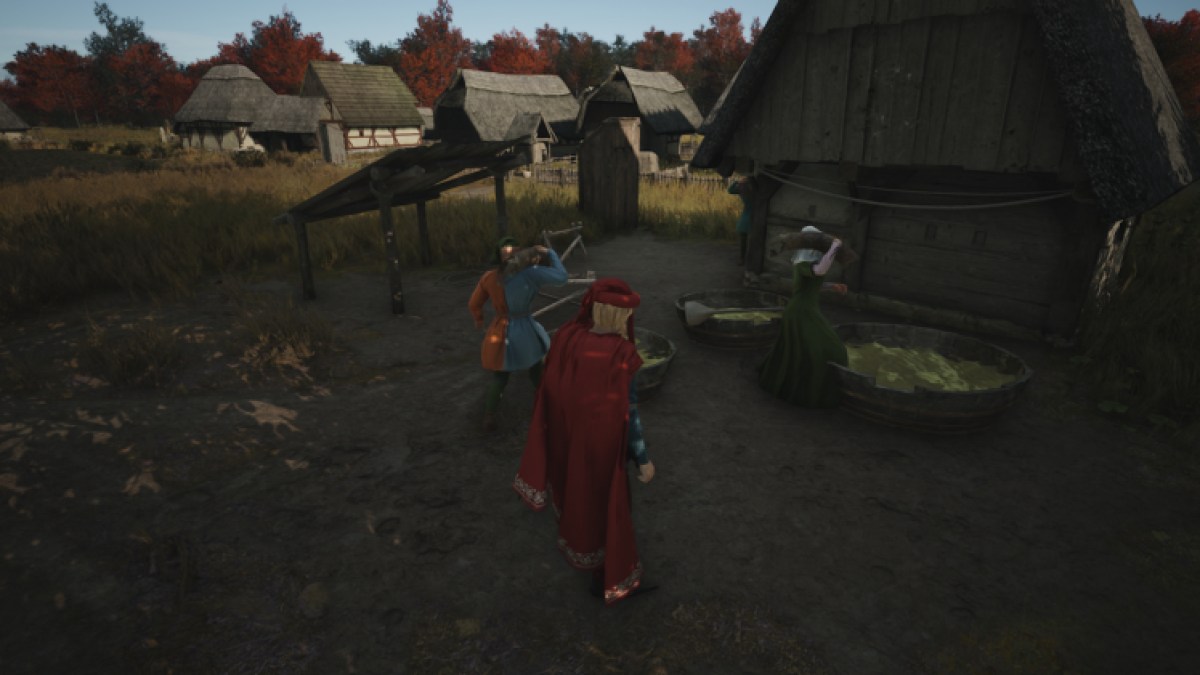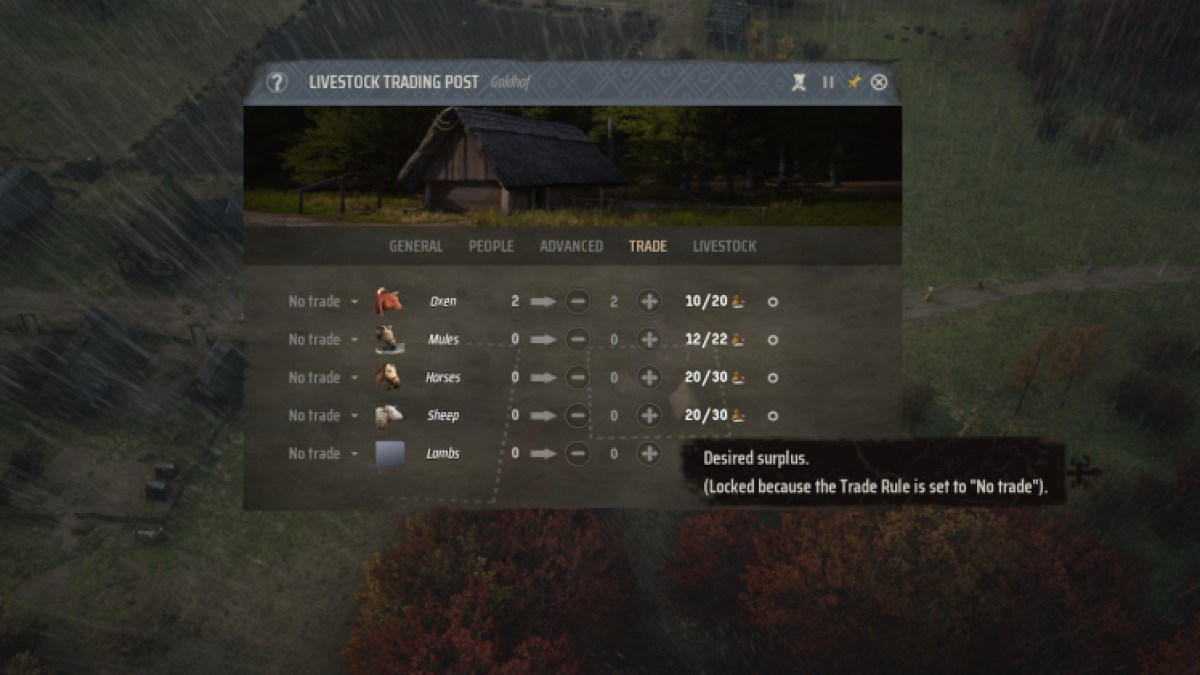In Manor Lords, the approach to clothing differs from traditional RTS city building games. There is no dedicated clothing building, which may initially seem perplexing.
To address the clothing demand in Manor Lords, the residents take matters into their own hands and make clothes themselves. All you need to do is ensure the necessary materials for making clothes are available, and the residents will handle the rest.
Clothing in Manor Lords can be crafted using leather, linen, and yarn.
By stocking market stalls in the Marketplace with these materials, residents will collect them, create clothing, and fulfill the clothing demand, allowing you to upgrade the Burgages.
Starting with leather production is advisable, as it is the simplest of the three materials to produce.
Leather in Manor Lords is derived from hide in the Tannery.
Hide can be obtained through hunting and passively from Goat Sheds in Burgages.
Constructing a Hunting Camp will provide a steady supply of meat and hide over time, ensuring a stable leather production. Build the camp near Wild Animals for optimal results.

Goat Sheds, an extension of Burgages, can also contribute to hide production. Ensure there is room for these structures when planning Burgage layouts.
Having a consistent source of hide is crucial for sustaining Tannery operations, especially during periods when hunting may not be viable.
The Tannery can be constructed from the Industry menu, requiring 4 Timber. Once operational, the assigned family will convert collected hide into leather, making it available for distribution.
In Manor Lords, linen and yarn are produced in the Weaver’s Workshop.
Weavers utilize wool to create yarn and flax to make linen, both of which can be used for clothing production.

Wool can be harvested from Sheep Farms, but initial sheep purchases from the Livestock Trading Post are necessary to kickstart wool production.
Flax, essential for linen production, can be cultivated in fields. It is a seasonal crop that requires careful management to maintain a steady supply.
Weaver workers will transform flax or wool into yarn and linen, respectively, and establish Market Stalls to distribute the finished products.
With an efficient clothing production system in place, you can expect to see increased satisfaction among your residents.
